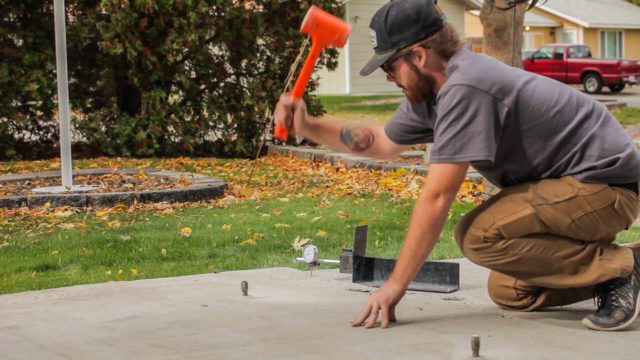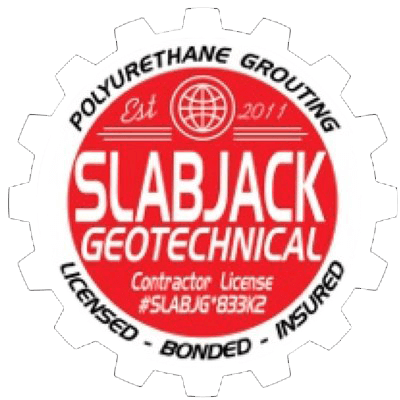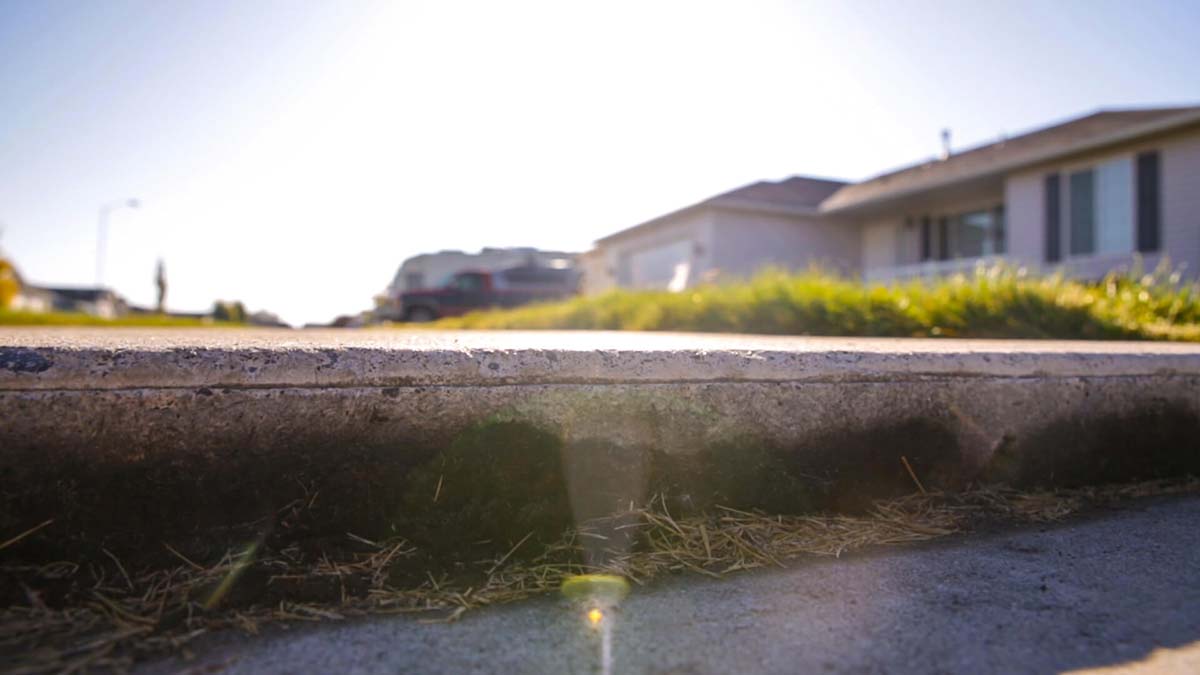Learn how to level a concrete slab to ensure a stable and durable foundation, address issues such as improper drainage and cracking, and avoid costly repairs and safety hazards.
Importance of Leveling a Concrete Slab
Uneven concrete floors can lead to various issues such as improper drainage, cracking, and uneven wear of flooring materials. Addressing the root issues of uneven concrete through leveling is crucial to ensure a stable and durable foundation for the structure it supports. Failure to level a concrete slab can result in costly repairs and potential safety hazards.
It is important to understand that uneven concrete slabs can result from various factors such as soil settlement, poor initial installation, or environmental conditions. For example, if a concrete slab was initially poured on improperly compacted soil, it may settle unevenly over time. Addressing these issues through proper leveling techniques is essential to prevent further damage and ensure the longevity of the concrete structure.
Tools and Materials Needed for Leveling
Essential tools for leveling a concrete slab include a 2×4 wooden rail, leveling compound, trowel, and protective gear. Self-leveling compounds, commonly used for leveling, offer ease of application and provide a smooth, level surface. The choice of tools and materials is crucial for achieving a successful leveling project and ensuring the longevity of the leveled concrete slab.
In addition to the basic tools and materials, it’s important to consider the specific requirements of the project. For instance, if the concrete slab is located in a moisture-prone area such as a basement, using a self-leveling compound with Portland cement can help mitigate potential moisture issues and provide a stable subfloor for flooring installation. Taking into account the environmental and structural factors can enhance the effectiveness of the leveling process.

Step-by-Step Process of Leveling a Concrete Slab
To begin the leveling process, a 2×4 wooden rail is laid across the floor, and the unevenness of the slab is scribed onto it to identify the areas that require leveling. Once the areas are identified, the leveling compound is mixed and poured inside the perimeter of the rails, and then it is smoothed out to achieve a level surface. Allowing the leveling compound to cure overnight before installing flooring is essential for the success of the leveling project.
In some cases, especially for larger projects or areas with significant unevenness, it may be necessary to use additional techniques such as laser leveling or specialized equipment to ensure the accuracy of the leveling process. These advanced methods can provide precise and consistent results, particularly in situations where manual leveling may be challenging.
Tips for a Successful Leveling Project
Thoroughly cleaning and preparing the concrete surface before starting the project is crucial to ensure proper adhesion of the leveling compound. Following the manufacturer’s instructions for the application of the leveling compound and adhering to recommended thickness guidelines are essential for achieving the desired results. Working methodically and carefully to avoid lumps, bumps, or uneven areas in the leveled surface is important for a smooth and level finish.
In addition to the technical aspects of the leveling process, it’s important to consider the impact of the surrounding environment and future usage of the leveled concrete slab. For instance, if the area is expected to have heavy foot traffic or support heavy equipment, reinforcing the leveled surface with additional materials or techniques can enhance its durability and longevity. Considering these factors can contribute to the overall success of the leveling project.
Achieving a Level Floor in the Basement
Self-leveling compounds are an effective solution for achieving a level floor in the basement, offering a smooth and even surface for various flooring materials. Using a compound with Portland cement for basements can help mitigate moisture issues, providing a stable and moisture-resistant subfloor. The process involves laying a 2×4 wooden rail across the floor, scribing the unevenness of the slab onto it, and then pouring and smoothing the leveling compound within the perimeter of the rails.
For example, a homeowner looking to transform their basement into a functional living space may opt for self-leveling compounds to ensure a level and moisture-resistant subfloor before installing flooring materials. This approach not only addresses the unevenness of the concrete slab but also provides a reliable foundation for the basement renovation project.
Leveling a Sloping Concrete Slab in a Semi-Basement/ Semi-Walkout Area
Addressing a sloping concrete slab in a semi-basement/semi-walkout area requires careful consideration of potential foundation issues and the best approach for leveling the subfloor. Engineers’ confirmation of no active foundation issues and the absence of a gap between the slab and the soil below provide reassurance for proceeding with the leveling process. Options such as using self-leveling compound or framing and pouring concrete can be considered based on the specific requirements and conditions of the area.
In a real-life scenario, a homeowner with a sloping concrete slab in a semi-basement/semi-walkout area may consult with structural engineers to assess the best approach for leveling. Based on the engineer’s recommendations and the structural integrity of the area, the homeowner may choose between self-leveling compound application or more extensive concrete framing and pouring to achieve a level subfloor.
Cost-Effective Approaches for Leveling a Concrete Floor
Various cost-effective approaches can be employed to level a concrete floor while keeping the project expenses manageable. Ideas include using cheap sand mix to bring the slab below level, adding pea gravel aggregate to self-leveling compound, and securely screwing cheap OSB sheets to the slab in low spots before burying them in self-leveler. Exploring different approaches and materials can help achieve the desired levelness while effectively managing project costs.
For instance, a DIY enthusiast looking to level a concrete floor on a budget may explore alternative materials and techniques, such as incorporating inexpensive additives to self-leveling compounds or using locally available materials to address low spots in the concrete slab. By being resourceful and strategic, it’s possible to achieve a level floor without compromising quality while keeping costs down.
Best Options for Leveling Concrete Floors
Comparing self-leveling concrete compounds, grinding, and professional concrete leveling can help in determining the best option for specific leveling requirements. Each option has its advantages and disadvantages, and understanding these factors is crucial for making an informed decision. Self-leveling concrete compounds offer ease of application and provide a smooth, level finish, while professional concrete leveling addresses the root issues of uneven concrete, offering a long-term solution.
For example, a commercial property owner considering options to level a concrete floor may weigh the benefits of self-leveling compounds against the comprehensive approach of professional concrete leveling. By evaluating the specific needs of the property and the long-term durability required, the property owner can make an informed decision on the most suitable leveling method.
Professional Concrete Leveling
Professional concrete leveling is the best option for addressing the root issues of uneven concrete floors, providing a comprehensive and long-term solution. The process involves determining the best type of leveling, drilling holes, pumping the voids with leveling mixture, and finishing the repair to ensure structural stability and durability. Professional concrete leveling addresses the underlying causes of uneven concrete floors, offering a reliable solution for achieving a level and stable concrete floor.
Interested in Learning More?
Here at Slabjack Geotechnical, we are the leading concrete experts in the Seattle, Washington area. If you are considering working with an expert on your next concreting project, please get in touch with one of our knowledgeable and experienced team to discuss your needs.
FAQs
How do you level already poured concrete?
To level already poured concrete, various methods like grinding, patching, or using self-leveling overlays can be employed, depending on the extent of unevenness and the desired finish.
Can you put new cement over old cement?
Yes, new cement can be applied over old cement after thorough cleaning and preparation. This process, known as resurfacing, provides a fresh and even surface without the need for complete removal of the existing concrete.
How do I determine if my concrete slab needs leveling?
Examine your concrete slab for noticeable unevenness, cracks, or signs of sinking. If you notice these issues, it’s likely that your concrete slab may need leveling.
What are the common causes of uneven concrete slabs?
Uneven concrete slabs can result from soil settlement, poor compaction, erosion, or plumbing leaks beneath the slab, causing shifts and settling over time.















